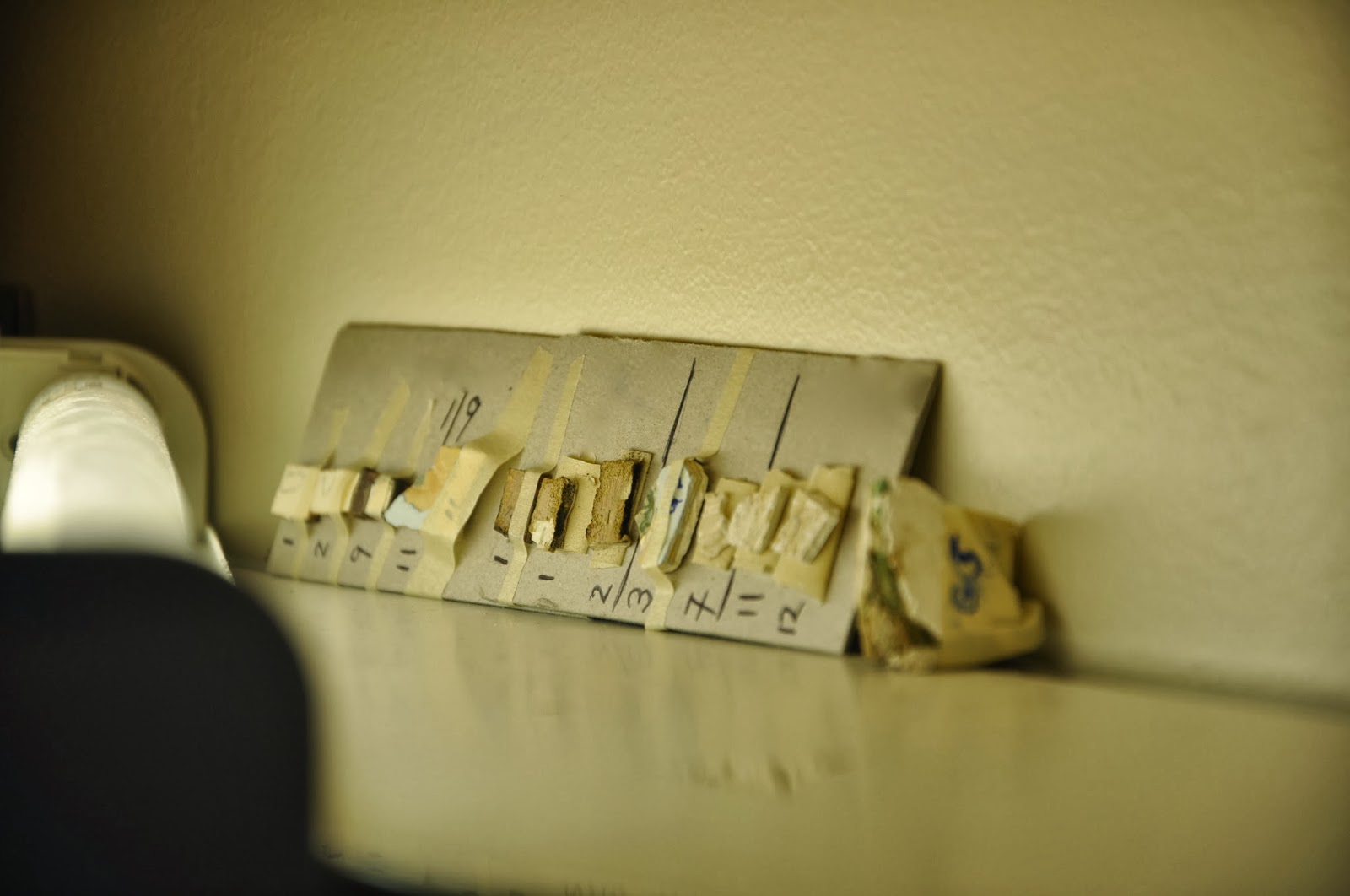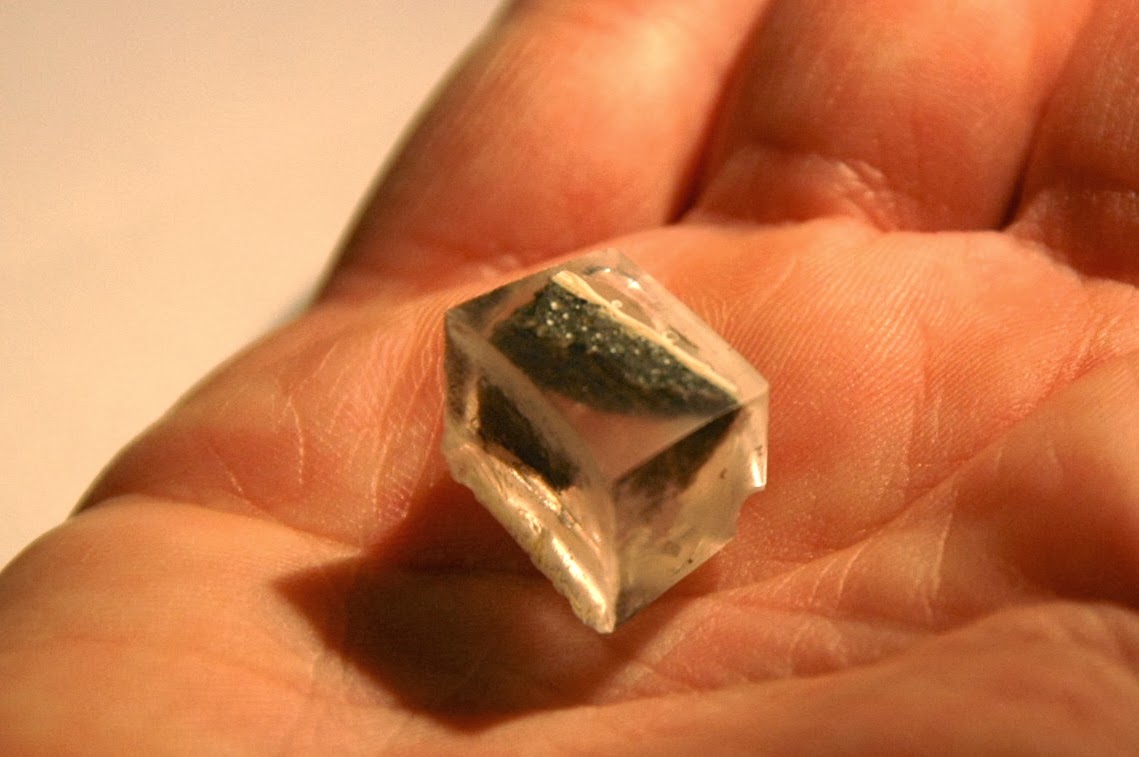10 Jan Parthenons Done in Molasses Candy; What Color Was the Kittredge House?
 Alice Gilmore and Brian Powell of Building Conservation Associates (BCA) recently volunteered to solve an important mystery for HBI: what were the original paint colors of the 1836 Alvah Kittredge House? The question came up when actor and philhellene Bronson Pinchot came to Roxbury in November and quoted Mark Twain?s nostalgic look-back to to the Greek Revival Houses of his boyhood as ??.Parthenons done in molasses candy.?? Molasses? Not the pure temple white that we typically see? BCA?s analysis will help HBI decide final colors after completion of the $3.8 million rehabilitation currently underway. But, BCA is keeping us all in suspense on the final results; first, Alice tells us how they analyze the many layers of paint on a 178-year-old house. The mystery will be revealed next week.
Alice Gilmore and Brian Powell of Building Conservation Associates (BCA) recently volunteered to solve an important mystery for HBI: what were the original paint colors of the 1836 Alvah Kittredge House? The question came up when actor and philhellene Bronson Pinchot came to Roxbury in November and quoted Mark Twain?s nostalgic look-back to to the Greek Revival Houses of his boyhood as ??.Parthenons done in molasses candy.?? Molasses? Not the pure temple white that we typically see? BCA?s analysis will help HBI decide final colors after completion of the $3.8 million rehabilitation currently underway. But, BCA is keeping us all in suspense on the final results; first, Alice tells us how they analyze the many layers of paint on a 178-year-old house. The mystery will be revealed next week. BCA was given the exciting opportunity to sample paint from the Alvah Kittredge House to determine its original historic paint scheme. The house is presently painted in a modern white paint. HBI was interested to know whether the original paint was a different color or a more subtle historic white. Paint analysis is used to identify historic paint colors and to comparatively date alterations that have been made to historic buildings. Our colleague, Brian Powell, who has analyzed paint on hundreds of building throughout New England, helped us decipher the paint history of the Kittredge House.
BCA was given the exciting opportunity to sample paint from the Alvah Kittredge House to determine its original historic paint scheme. The house is presently painted in a modern white paint. HBI was interested to know whether the original paint was a different color or a more subtle historic white. Paint analysis is used to identify historic paint colors and to comparatively date alterations that have been made to historic buildings. Our colleague, Brian Powell, who has analyzed paint on hundreds of building throughout New England, helped us decipher the paint history of the Kittredge House.  This blog post will describe the process of how BCA takes paint samples, looks at them under the microscope, and then matches the original color. A later post will discuss the specifics of the paint colors that we found at the Kittredge house.
This blog post will describe the process of how BCA takes paint samples, looks at them under the microscope, and then matches the original color. A later post will discuss the specifics of the paint colors that we found at the Kittredge house.
A paint analysis begins with a site visit. On site we try to find the area that has the heaviest build up of paint. This can sometimes be done with the naked eye, but often a field microscope and a scalpel are used to test which areas have the best accretions. Once we have found an area we want to sample, we use a Dremel tool to remove a piece of the substrate and the attached paint.
 Back in the lab we embed half of each sample in a cube of polyester resin. Once the resin is dry, one side of the resin block is ground and polished to prepare it for viewing under the microscope. We look at and photograph each sample at 125x magnification in both visible light and ultraviolet light. The resulting photographs are cross-sections of all the paint layers.
Back in the lab we embed half of each sample in a cube of polyester resin. Once the resin is dry, one side of the resin block is ground and polished to prepare it for viewing under the microscope. We look at and photograph each sample at 125x magnification in both visible light and ultraviolet light. The resulting photographs are cross-sections of all the paint layers. Once we have viewed the cross-sections and determined which color is the original, we begin color-matching. In this phase we use the second half of the sample, and manually expose the desired paint layer using a scalpel. Next we place the exposed sample under a florescent light for 2 weeks. This is an important step because historic paints contain linseed oil binders, which darken or yellow over time affecting the overall color of the paint. In order to obtain an accurate color match, we must light bleach each sample.
Once we have viewed the cross-sections and determined which color is the original, we begin color-matching. In this phase we use the second half of the sample, and manually expose the desired paint layer using a scalpel. Next we place the exposed sample under a florescent light for 2 weeks. This is an important step because historic paints contain linseed oil binders, which darken or yellow over time affecting the overall color of the paint. In order to obtain an accurate color match, we must light bleach each sample. When the light bleaching is completed, we use a Chromameter to measure the color of the paint. Using this measurement we find the corresponding color chip in the Munsell Color System. The Munsell Color System is a standardized way to measure color that is used widely in the preservation field. Using the Munsell color chip, we select, by eye, several possible paint colors from four commercial paint lines. We then determine which color is the closest match by measuring each option with the Chromameter and calculating the ?Delta E? value.
BCA has finished the light bleaching process and is ready to color match. Keep an eye out for our next entry where we discuss the historic paint colors found on the Alvah Kittredge House.



